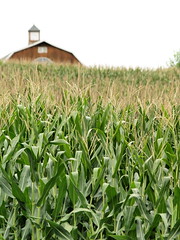 Image via Wikipedia
Image via WikipediaI buy a great deal of food at Costco in Hackensack, but it still has a way to go to become the only store I visit.
This morning, I picked up three half-gallons of 1% organic milk ($8.99), but I have to go to ShopRite for lactose-free milk.
Five pounds of lemons from Chile were $5.99. Three pounds of wild-salmon burgers were $12.99, and Costco also stocks fresh and frozen wild sockeye salmon, wild-caught flounder and haddock, whole red snapper and other seafood, including prawns and crab, so I don't really have to buy fish anywhere else.
Sunset-brand Roma tomatoes were two pounds for $2.99, lower than they were at the beginning of the summer; and three, large burpless cucumbers, also from Sunset, were $3.49. All Sunset-brand vegetables are grown without herbicides. Earthbound Farm organic salad mix was $4.49 the last time I bought it, a price you can't beat elsewhere.
Three pounds of conventional bananas were $1.32. A pound of organic spinach was $3.99 -- great sauteed, in a salad or piled on top of a pizza or foccacia.
We're not eating poultry or meat now. If we were, I'd have to go elsewhere for antibiotic-free turkey and dark-meat chicken and Australian free-range beef. Costco only carries grass-fed ground beef and organic breast meat or whole chickens.
Drug-free chicken sausage, organic ravioli, and fresh and frozen pizza are just the tip of Costco's food iceberg.
The selection of bread and rolls is terrific, including two loaves of 100% whole-grain, sliced bread for $3.99. Ditto for spices, juice, cheese, vegetables and fruit, though some of the large sizes are not suitable for a family of three. Ketchup, mustard, diced tomatoes, pasta sauces, dried pasta, maple syrup -- it's all there -- plus everything you need for the clean-up.




































